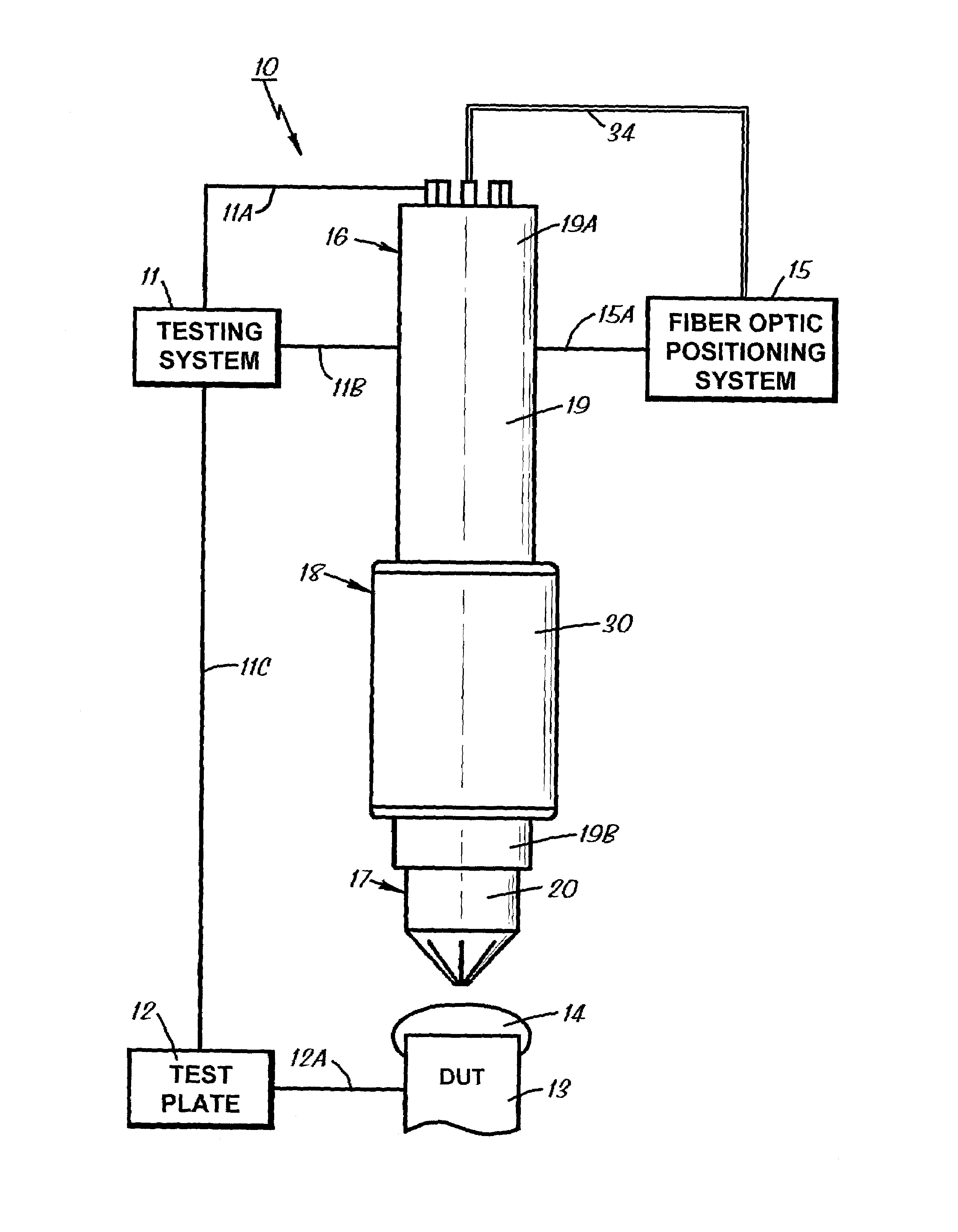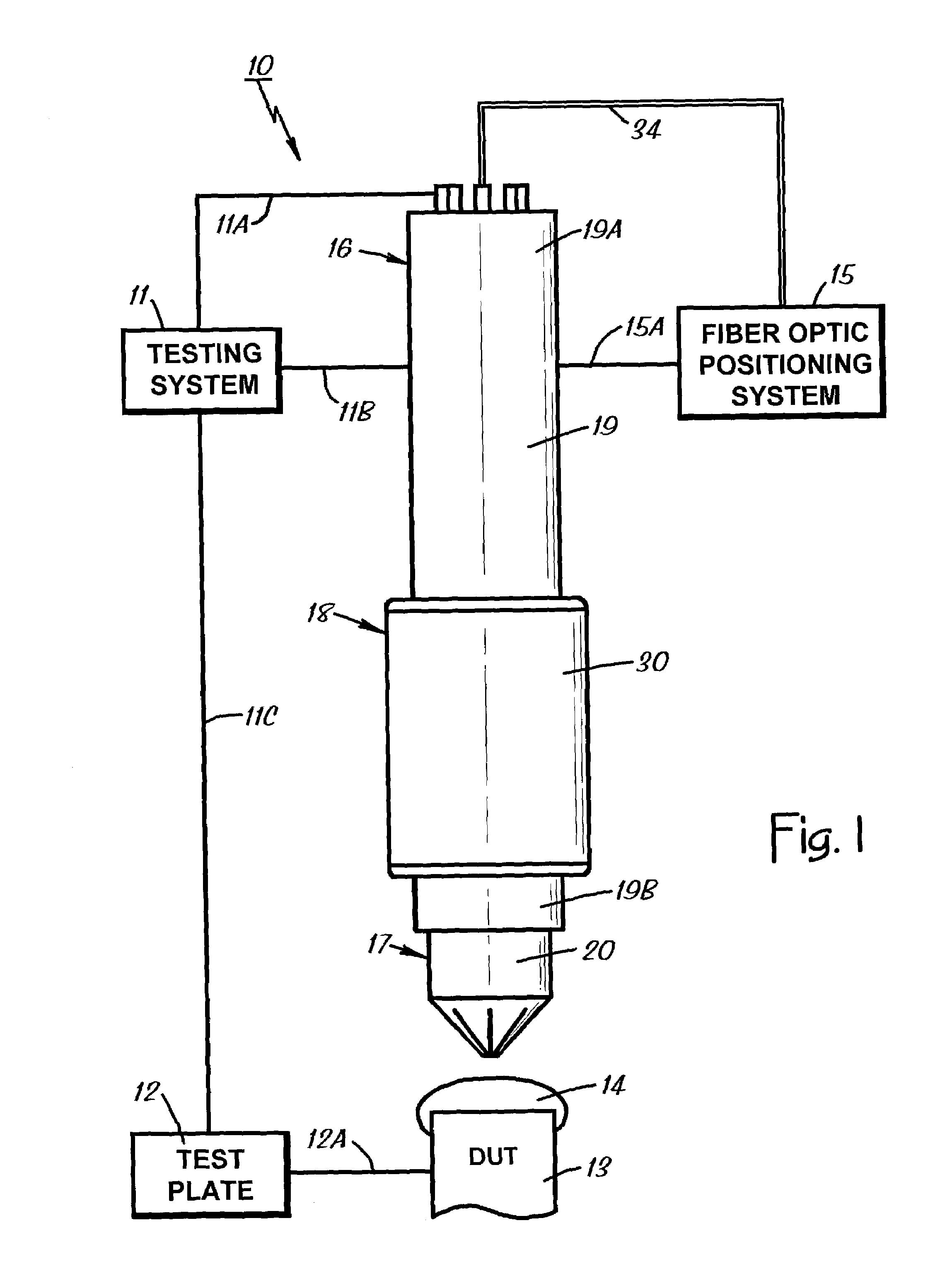Pogo contactor assembly for testing of and/or other operations on ceramic surface mount devices and other electronic components
- Summary
- Abstract
- Description
- Claims
- Application Information
AI Technical Summary
Benefits of technology
Problems solved by technology
Method used
Image
Examples
Embodiment Construction
[0035]FIGS. 1–7 of the drawings show various aspects of a contactor assembly 10 constructed according to the invention. It is shown in FIG. 1 in its typical environment, mounted on a component testing system 11 that is depicted diagrammatically. The testing system 11 is coupled to the contactor assembly 10 electrically, as represented in FIG. 1 by a signal line 11A, and mechanically as represented by a line 11B. The testing system 11 holds a test plate 12 as represented by a line 11C, and the test plate 12 holds a DUT 13 as represented by a line 12A. The contactor assembly 10 couples test signals between the testing system 11 and a DUT terminal 14 on the DUT 13, while a fiber optic positioning system 15 precisely positions the contactor assembly 10 relative to the DUT terminal 14 as represented by a line 15A. United States patent application having Ser. No. 10 / 097,464 provides some related information about contactor assemblies used with component testing systems, and that patent ap...
PUM
 Login to View More
Login to View More Abstract
Description
Claims
Application Information
 Login to View More
Login to View More - R&D
- Intellectual Property
- Life Sciences
- Materials
- Tech Scout
- Unparalleled Data Quality
- Higher Quality Content
- 60% Fewer Hallucinations
Browse by: Latest US Patents, China's latest patents, Technical Efficacy Thesaurus, Application Domain, Technology Topic, Popular Technical Reports.
© 2025 PatSnap. All rights reserved.Legal|Privacy policy|Modern Slavery Act Transparency Statement|Sitemap|About US| Contact US: help@patsnap.com



